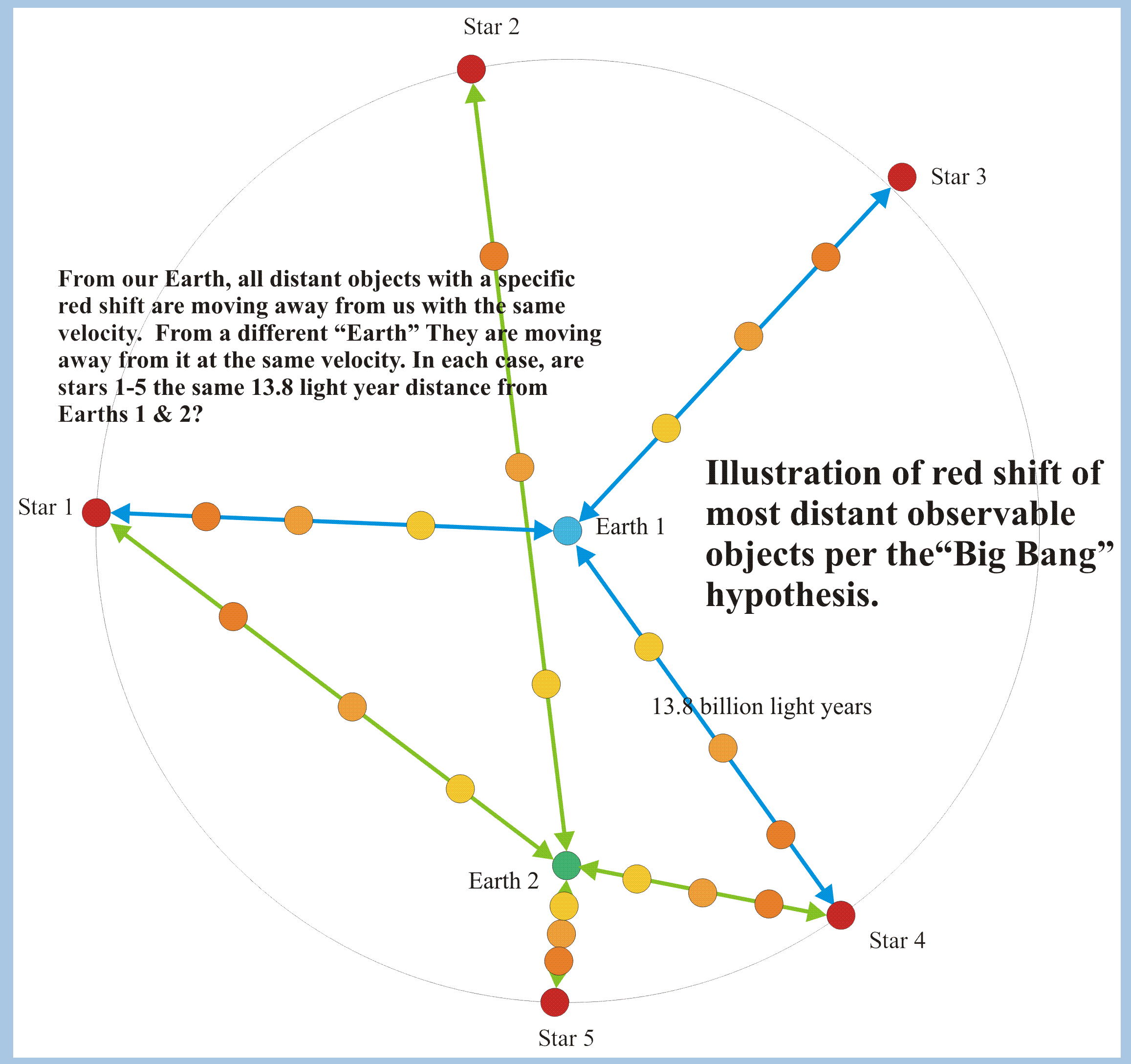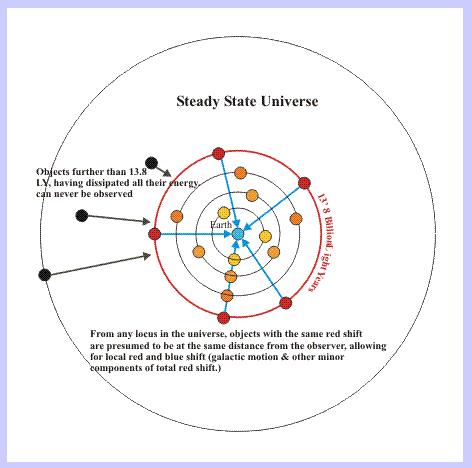More Ramblings About the Universe
Hubble's law states that a
galaxy's velocity of recession (it's red shift) is
proportional to its distance from the observer. This is the
assumption on which the entire Big Bang religion is founded.
I'm a science fiction writer, and I'm in
love with the infinite possibilities of an infinite, eternal
universe, so in my simplistic, non-mathematical thinking I
tend to simplify things. I'm in love with Ockham's razor, too.
So I'll simply state that a distant galaxy's red shift is proportional
to its distance or it's time en route to me, the
observer.
It's evident that some red shifts are due to recession, and that the drop in frequency is proportional to the velocity of recession. But it's also evident that there are blue shifts, and that the higher frequencies observed correspond to the velocity of the object' s approach.
So we have one cause of blue shift:
relative motion and its velocity; but we have additional
possibilities for red shift:
blue shift:
relative motion and its velocity; but we have additional
possibilities for red shift:
In Hubble's expanding universe, the
Big Bang universe, everything is receding from everything
else, and is red shifted; and the more distant objects are
receding faster than the nearer ones. The leap of faith this
requires is quite on a par with the biblical creation, and in
fact can be neatly paraphrased in biblical terms: in the
beginning there was a void, and God reared back and
created… The Big Bang creation myth obviously demands a
lot of hoops to be jumped through--dark matter, dark
energy--and a lot of pins for angels to dance on.

In a simpler universe, the universe in which "local" red and blue shift can be observed in galactic rotation, how do we explain the greater red shift of distant objects, ever-increasing until, at a distance of 13.8 billion light years, the light's frequency has flatlined, and none can be observed?
E=hc/l
E=the energy of a photon
h=Planck's constant
c=the speed of light
l=the wave length (frequency) of the light
That is about as
widely-accepted a statement as you can get. Stated in
words: frequency is inversely proportional to energy.
The lower the frequency (the greater the red shift) the lower
the energy of the photon observed.

What would cause a photon to lose energy as it traveled?
Am I supposed to know? I can throw out a wild-ass guess: maybe
the Higgs Field (or some other expression of the
no-longer-quite-discredited ideas of the aether or phlogiston)
slows it down--like air friction slows a bullet. Maybe
after about 13.8 billion years of traveling, the photon runs
out of energy. That doesn't mean the end of the
universe; it just means that the photon
(if it still exists at all in a zero-energy state) isn't
moving. It will never reach the observer. 13.8
billion light years is simply the furthest we can (ever)
see. The universe may well be going along just fine,
with galaxies and all that good stuff…maybe forever?
As a one-time anthropologist (not a cosmologist) I studied creation myths, and they all have one thing in common: they all begin. And most have endings, too: Revelations, Ragnarok, the heat death of the universe… Something about the finiteness of the human brain demands beginnings and endings. Infinity and Eternity are terribly uncomfortable to contemplate. So imagine the relief when Hubble gave us a way out of that immense Judeo-Christian. timeless, and infinite Creation? Yes! Ahh! Whew! A beginning! A universe at last on a human scale!
This is not the place for an exposition of all the hoops cosmologists have had to jump through to keep theory and observable reality in synch: dark energy, dark matter, dark angels… Oops. Scratch that last one. Just tell me where a Big Bang is in E=hc/l.